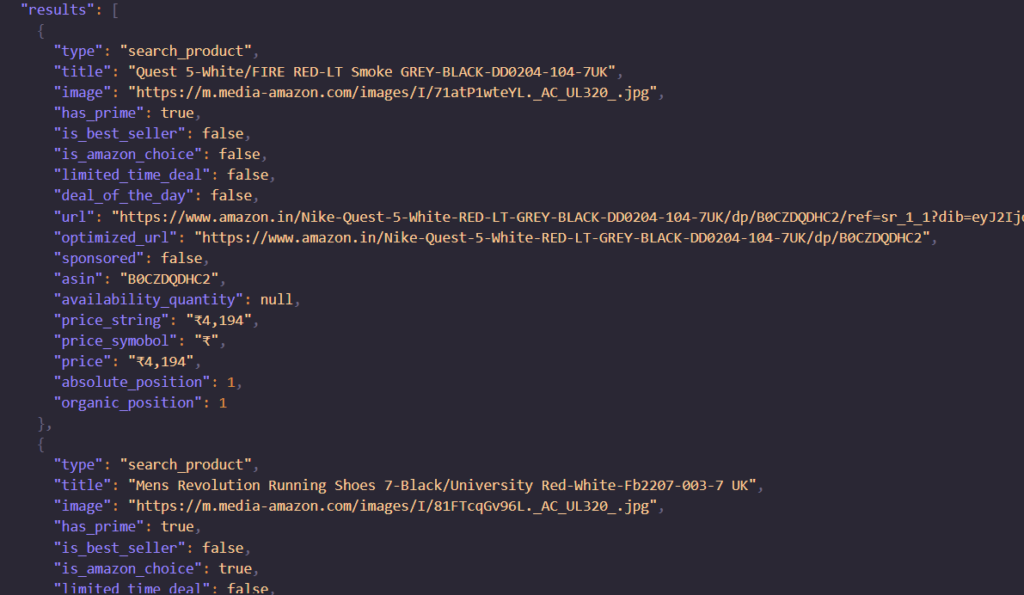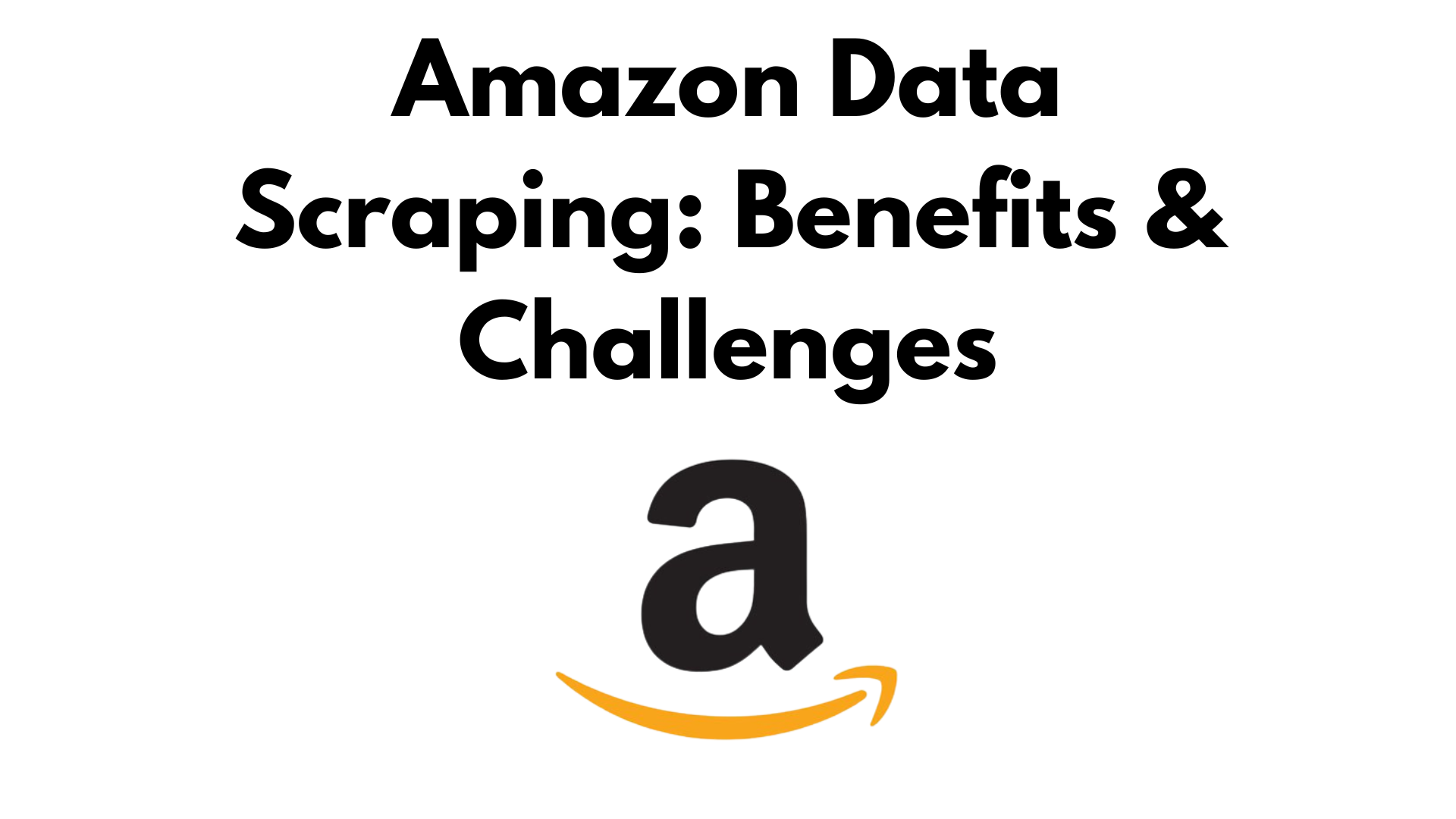Amazon’s current market cap is nearly 2 trillion dollars making it the 6th largest company. It owns the title of the biggest E-Commerce giant in the world, delivering approximately 1.6 million packages per day, comprising 66 thousand orders per hour and 18.5 orders per second(source).
Moreover, if this company has that much capability, it would be sitting on a vast gold mine of product data that can be utilized to create product repositories, optimize supply chain management, and price tracking to compete in the market.
In this article, we will learn the benefits and challenges developers face in Amazon Data Scraping.
What is Amazon Data Scraping?
Amazon Data Scraping can be defined as extracting product data including product name, price, description, and customer ratings and reviews using an automated bot scraper. Businesses widely collect this data for various use cases including price monitoring, sentimental analysis, market research, etc.
How is Amazon Data Extracted?
Scraping Amazon Data is not a simple task and requires the expertise of data professionals to extract data at scale. However, the following methods are applied to access this vast repository of product data:
Designing your scraper: You can design your scraper by selecting a scalable programming language for web scraping that can handle large amounts of load efficiently. However, your scraper will also require thousands of user agents, multiple headers, and most importantly, a proxy pool that will be rotated for each request to become unidentifiable from the anti-bot mechanism.
Amazon Scraper API: Handling proxies and CAPTCHAs can be frustrating, and creating your infrastructure from scratch would be more time-consuming than dealing with these obstacles. However, you can consider using an Amazon Scraper API that is more reliable and can help you meet your demands.
Benefits of Scraping Amazon Data
There are several benefits to Amazon Data Scraping:
Supply Chain Management — Amazon data scraping can significantly enhance supply chain management by allowing better demand forecasting, inventory management, and supplier evaluation. By analyzing scraped data in real-time businesses can optimize logistics, resulting in cost reduction, improved efficiency, and quicker response time.
Product Data Enrichment — Product data enrichment can be strategized to stay competitive by gathering detailed product information, including pricing, features, descriptions, and customer reviews. This will enhance your product listings and allow you to achieve higher sales in the market due to higher visibility by matching the user’s search intent.
Demand Forecasting — Amazon data scraping can be used to collect historical sales data and price changes which can be analyzed to identify buying patterns and preferences of the customer to predict potential future trends in the market for a specific set of products. This would help companies optimize their inventory, and stock levels to adapt to market demands boost sales, and improve business performance.
Challenges in Scraping Amazon
It is not easy to bypass Amazon’s anti-bot mechanism when scraping product data at scale. Here are some challenges you might face while scraping Amazon:
IP Blockage and CAPTCHA—Scraping Amazon with a similar pattern again and again will result in an IP blockage and your bot will be shown CAPTCHA for every request. It is important to use multiple IPs and headers and rotate them for every request to bypass the restriction to some extent.
Frequent Changes in Product Pages — Amazon has various categories of product pages and it frequently updates its page structure to optimize its UI. However, this changes the classes and attributes developers have previously implemented in their scraper, which ultimately generates inconsistency in the data.
Inconsistent Scraper —It is difficult to create a scraper from scratch that can handle millions of requests consistently without getting blocked. Scraping Amazon is difficult and requires significant infrastructure, including millions of IPs and other necessary tools, to extract product data from it at scale. Your scraper might initially run smoothly, however, eventually if the design of your scraper is not optimized it will start getting blocked and may produce inconsistency in the results.
How Amazon Scraper API can help?
We have discussed various challenges that can arise while scraping Amazon. Amazon’s anti-bot mechanism is constantly working to track IPs that are scraping their pages on a large scale. Moreover, the frequent changes in page structure make it difficult for developers to maintain their scrapers, resulting in a broken data pipeline.
EcommerceAPI’s Amazon Scraper API has been perfectly designed to handle a huge amount of load on its server. Additionally, it is easy to integrate and solve blockages and CAPTCHAs on its backend to maintain a consistent data flow from its pipeline.

Moreover, it awards users with 1,000 free credits upon their first registration.
After obtaining the API key from the dashboard, copy it into the code below to start extracting data from Amazon.
import requests
payload = {'api_key': 'APIKEY', 'url':'https://www.amazon.in/s?k=nike+shoes'}
resp = requests.get('https://api.ecommerceapi.io/amazon_search', params=payload)
print (resp.text)
Running this code on your desktop will provide you with the following structured JSON output:

Conclusion
Amazon Data Scraping may be beneficial, however, it comes with several challenges that can take a huge toll on your time and resources if you’re designing your scraper from scratch. However, several solutions in the market can help you streamline this process. Consider utilizing an E-commerce API that provides comprehensive access for multiple e-commerce platforms including Amazon, and Walmart, which can be considered to create a seamless data pipeline ensuring consistency and reliability with the data retrieval.

